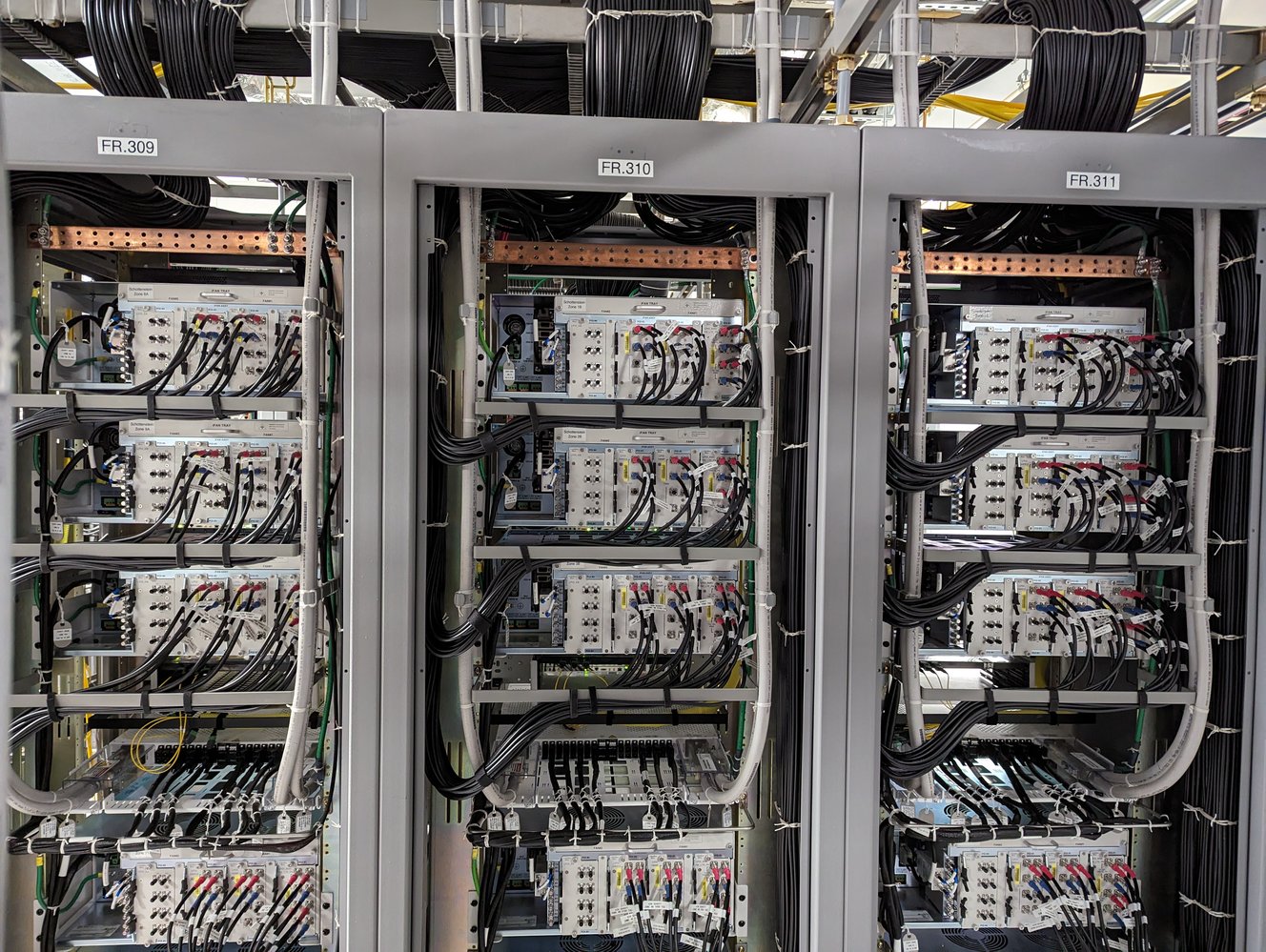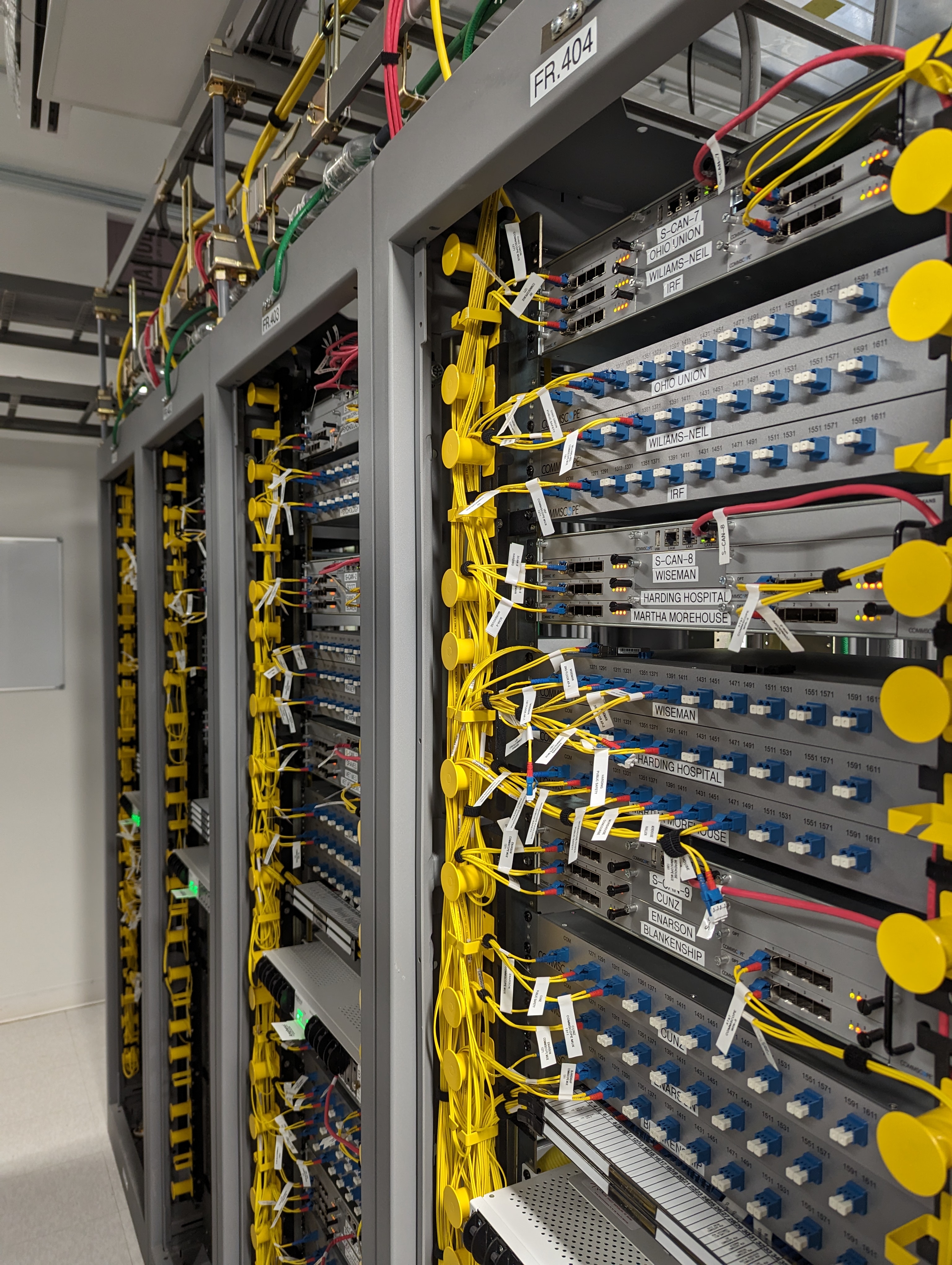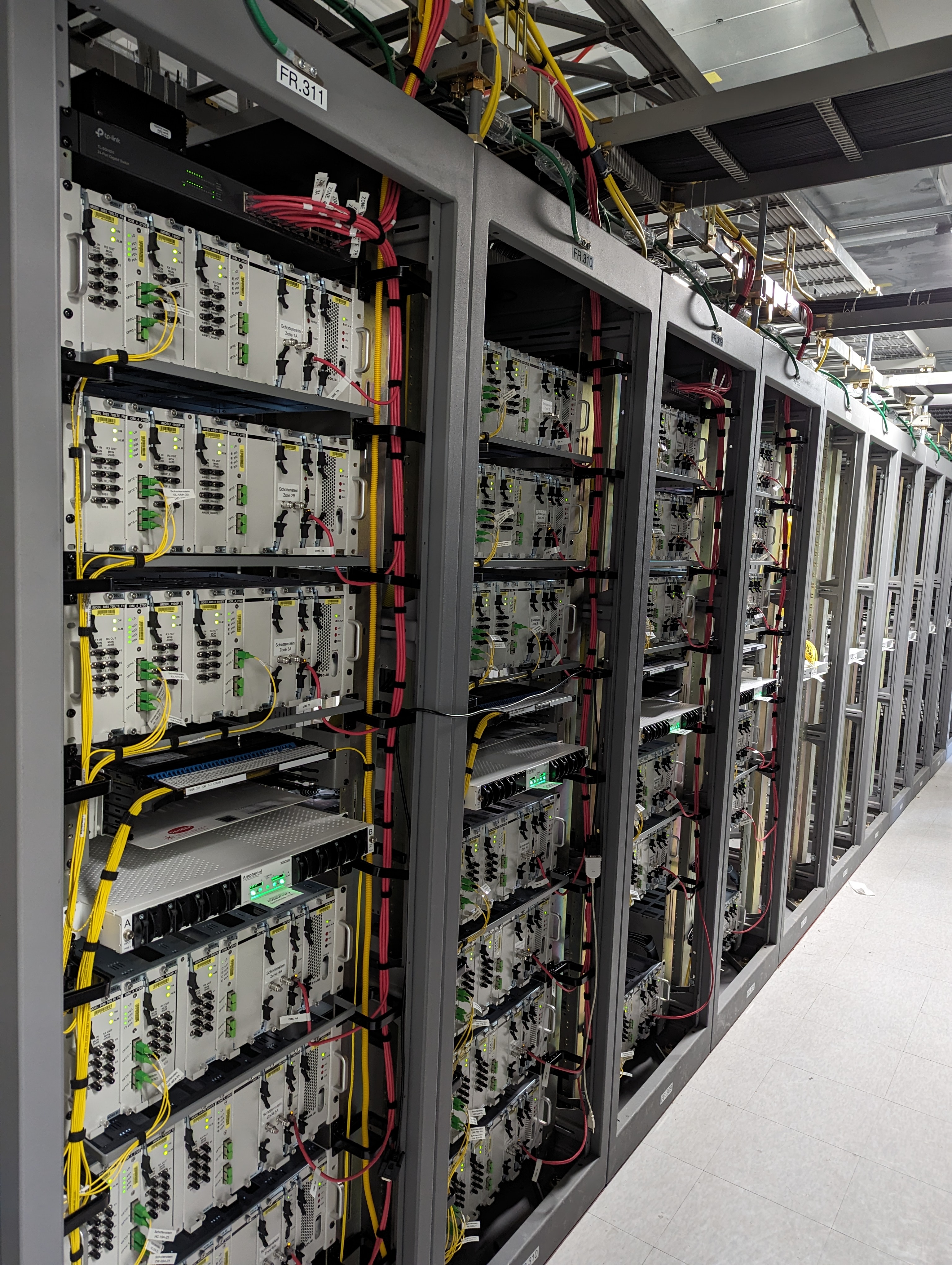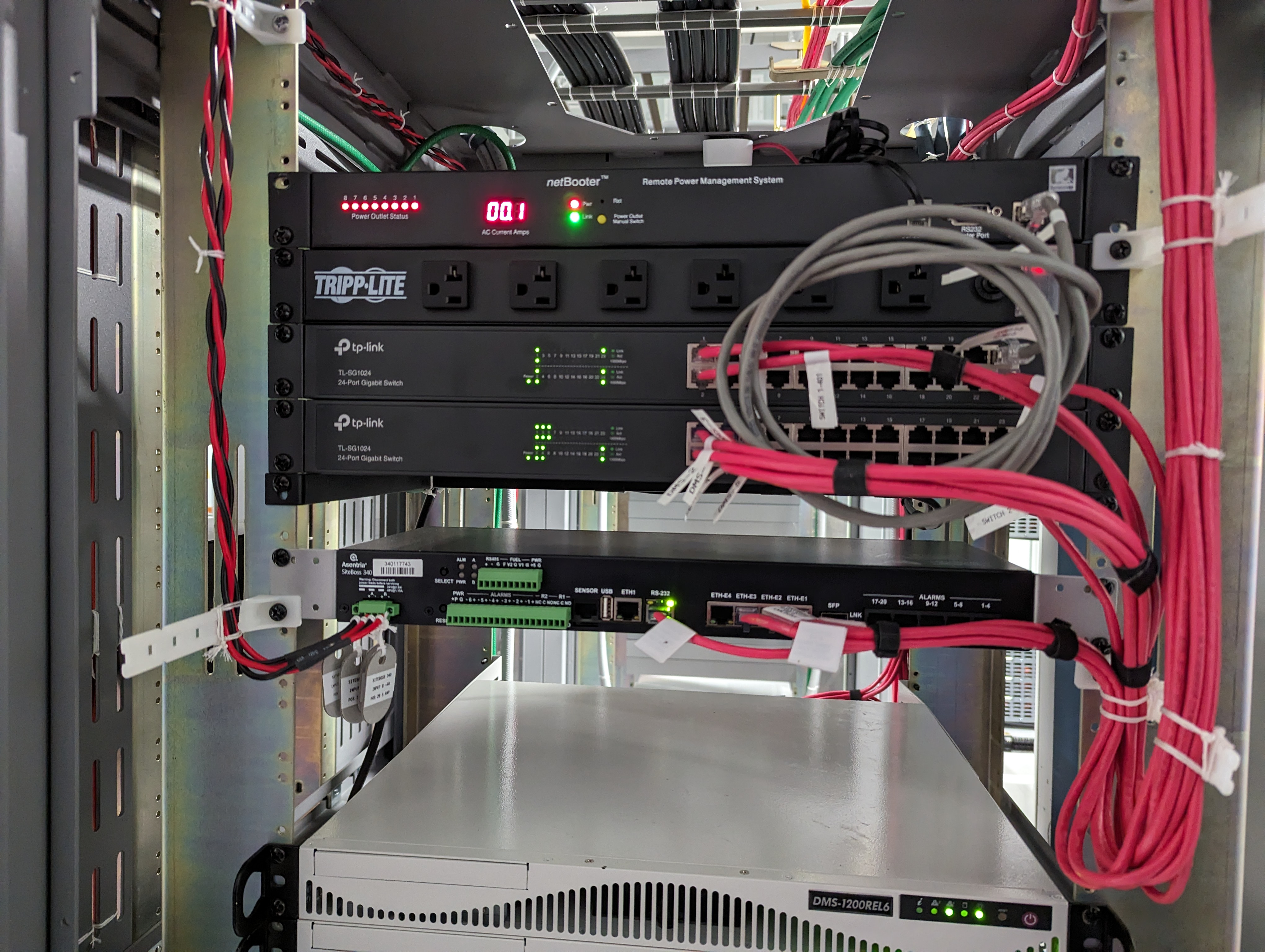
Solutions Brief
An Ohio University’s DAS and Small Cell Facility
Project Overview:
A large university in Ohio has a distributed antenna system and small cell networks with a centralized facility as its head end. This facility faced several challenges related to its telecommunications infrastructure. This included aging buildings and the need for system expansion, which resulted in operational expenses and space constraints.
To address these challenges, the initial solution was to deploy three 2-piece prefabricated shelters approximately 10 years ago. These shelters proved effective initially, but as time passed and the campus’ system continued to grow, the limitations of the existing infrastructure became increasingly apparent.
As a result, the system ownership team set out to find a long-term solution that would not only address the current challenges but also allow for future scalability. This led to the decision to upgrade and modernize the head end buildings to accommodate the growing telecommunications infrastructure on the campus.
Challenge
- The system owner and operator faced the challenges of aging infrastructure causing the increase of operational expense associated with the head end buildings for the campus’ systems.
- Another problem posed by the aging infrastructure was that of space limitations. They had three 2-piece prefabricated shelters that were deployed approximately 10 years ago which worked well for a time, but were not designed to accommodate future growth, and as a result, there was limited space available for any necessary expansions or upgrades. This became a major issue as the campus’ indoor DAS, outdoor DAS, small cell, and rooftop infrastructure has continued to grow and evolve over time.
Solution
The customization needed for this project was primarily focused on deploying the high density DAS equipment for the stadium and arena in standard network racks.- Deployment of the network infrastructure and DC power to support the head end equipment which included installation of 62 4-post open bays, (3) 1200A –48V DC power plants and battery strings, cabinet supported superstructure and ladder racking
- Build-out of the Fiber Interface Room where all campus and carrier fiber enters the new facility and is distributed out via the high-density Corning Centrex product set.
- Prep and deployment for the temporary placement of carrier signal source in the common room to support the university’s stadium and arena
- Build-out of new Solid head-end equipment to support the stadium and arena
- Build-out of new CommScope head end equipment to support the existing campus buildings that had been pulled back to the head end
- Prep of fiber interconnects to Carrier shelters to minimize impact to backhaul fiber and connections going direct to buildings
- Prep of fiber interconnects to minimize impacts to public safety coverage as well as coverage for the ten (10) building medical campus
This presented a challenge due to the high density of coaxial cable required for each rack. In order to accommodate this, additional customization was necessary to the racks and standard cabling procedures. Aside from dealing with the high density of coax cable, there were also challenges in terms of cutover and migration planning. This was particularly evident in the fiber cutover aspect, where the university’s fiber team had to cut and pull back (2) 144-strand fibers, (1) 72-strand fiber, and (1) 432-strand fiber. This needed to be done while minimizing downtime for critical sites around campus.
Overall, this project required a high level of technical expertise and careful planning in order to successfully deploy the DAS equipment and minimize disruption to the network. Through thorough customization and meticulous cutover and migration planning, the project was able to be completed with minimal downtime and optimal functionality. With the success of this deployment, it further showcases the importance of customizing solutions to meet specific needs and challenges within a network environment. As technology continues to advance, customization will likely become an even more crucial aspect of network deployment and maintenance. It is important for network professionals to stay informed and adapt to these changes to effectively meet the needs of their organization. By continuously improving and customizing solutions,
The campus faced several challenges related to its telecommunications infrastructure. This included aging buildings and the need for system expansion, which resulted in operational expenses and space constraints. networks can remain efficient, reliable, and adaptable in today's rapidly evolving technological landscape.
To address these challenges, the initial solution was to deploy three 2-piece prefabricated shelters approximately 10 years ago. These shelters proved effective initially, but as time passed and the campus system continued to grow, the limitations of the existing infrastructure became increasingly apparent.
As a result, the team was tasked with finding a long-term solution that would not only address the current challenges but also allow for future scalability. This led to the decision to upgrade and modernize their telecommunications infrastructure on the campus.
The upgrade would involve the replacement of the aging buildings and deployment of a new system that could accommodate future expansion.
This decision was driven by the need to maintain efficient operations, ensure sufficient space for equipment, and support the growing demand for telecommunications services on campus. Additionally, this upgrade would provide a more modern and reliable infrastructure, aligning with the university’s commitment to innovation and technology.
Phase One:
The first phase of this project was the build-out of a new common DAS (Distributed Antenna System) room. This room houses the DAS head end equipment and does not contain any carrier specific equipment. The completion of this phase allowed for the cutover and migration process to take place. In the first phase of construction, a new common Distributed Antenna System (DAS) room was built to house the DAS head end equipment. This equipment is not carrier specific and therefore does not belong to any particular network provider.
The main focus of this phase was on deploying the necessary infrastructure and DC power to support the head end equipment. This included the installation of 62 4-post open bays, three 1200A -48V DC power plants, and battery strings. Additionally, a cabinet supported superstructure and ladder racking were also installed.
The preparation and deployment process for the temporary placement of carrier signal source in the common room was crucial to support the university’s stadium and arena. With the build-out of new head-end equipment, preparation of fiber interconnects, and consideration for public safety coverage, this temporary placement was successfully implemented without any major disruptions or impacts on communication services.
The next step was the build-out of the Fiber Interface Room. This room serves as the main entry point for the university’s campus and carrier fiber into the new facility. The high-density Corning Centrex product set is used to distribute the fiber connections throughout the building.
These initial construction phases were crucial in creating a solid foundation for the network infrastructure and ensuring that it could support the DAS head end equipment and fiber connections from various carriers.







